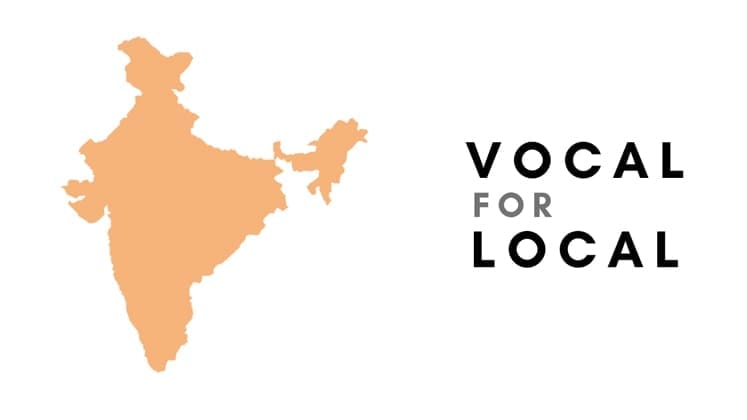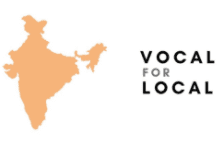Introduction
The Indian apparel Industry has incurred around Rs. 1 lakh crore of loss including 50 lakh jobs, as announced by Clothing Manufacturers Association of India (CMAI). All textile and apparel related businesses, including small ventures and Indian labels had to go through a lot of hardships to keep the cash flowing and keep the brand afloat in the market.
One of the worst groups hit by the pandemic are the handloom sectors across various states in India. Starting with the retail stores getting shut down, the sector stopped getting orders. This led to the artisans getting no work at all, thereby stopping cash inflow. Furthermore, retail events like exhibitions and fairs are not going to take place till next few months. The interests of customers have also been altered with lower incomes resulting in sudden disruption of artisan’s livelihood.
It is now more crucial than ever to support local designers, labels, ventures including the handloom industry, who desperately need assistance to get lives back on track after months of no business and too many workers to stay afloat. The solution for surviving during this period is growing locally and helping others flourish at the various stages of the consumer-retail chain.
The only body capable of making sure the concerns of the craftspeople are heard is ourselves, the user. You are boosting the economy by wearing something crafted in India, and making sure that native creativity flourishes. It is an approach for which one of India’s most renowned fashion designers, Sabyasachi Mukherjee, has been speaking for a while now.
The voice “vocal for local” can be seen as a bilateral approach which would be a boon for the nation and for the individual as well.
The Make In India experience
Malini Ramani just recently confirmed that she was shutting her company after 20 years of being India’s most celebrated resort designers. She designed glamorous evening wear, and felt this is not the time to be selling fancy clothes, when migrant laborers and poor people are dying of hunger and insufficiency. She realized in the lockdown that she is paying high rents with no clear profits in sight. She might open a sustainable line in the future, but is currently looking for a different way of life. Let’s not neglect the fact that most Indian brands do not have corporate backing. Make in India is definitely not cheap as other exported apparel but this lockdown has made us understand that we have a myriad of textiles and clothing. Therefore, buying smart with fabrics that are made to last would be a better approach.
A respectable business owner, Mousumi Bose, from Ranchi, Jharkhand, runs a small business of ethnic wear products including sarees, kurtis, dress material etc. She mainly sources all her products from different states in India including Kolkata, Purulia, Lucknow and Chhattisgarh.
She set up a small boutique in the year 2015. Her initial sales were of Kosa silk of Chapa, Chattisgarh. Once it gained momentum from increasing clients, she added products from other states as well. Before the pandemic hit, she had a regular customer base and good turnover, in general. But due to Covid, her business is at par right now. She is not able to travel to different states in India to get supply of her products. Moreover, she has lost a good amount of customers.
According to her, there should be a platform where wholesalers from different states can sell their products, where small business owners like herself can buy manufactured products online at a wholesale rate.
Jai Khanna, from Varanasi, owner of Walaiti Ram Khanna & Son, specializes in production of Banarasi Sarees suits Lehengas and Dress Materials Handloom Sarees Pure Silk sarees Art Silk suits & Sarees , Brocade and zamdani. He has a manufacturing unit in Banaras itself, and also sources handloom fabrics from artisans.
His take on uplifting local businesses is for consumers to buy local instead of outside sources and limit imports from China, who is the biggest supplier of cheap textiles in the world.
Subham Silk is another Banarasi handloom manufacturing company, which deals with ethnic wear pieces, in addition to shirts and pants. Rachita Gupta, the founder, produces the fabrics herself and gets some of her stock from other artisans. Both these Banarasi textile producers have faced a decrease in sales after the epidemic.
Lalita Khadi Gram Udyog Sewa Samiti, is an organisation that is situated in states across India. Prashant, who manages the Benaras site, deals with silk, cotton and synthetic fabrics. It has a wide range of products from dress material, sarees, kurtis, to shirting and suiting. The society manufactures their own textiles on powerloom and has an embroidery sector. They also source handloom from other artisans and a variety of textiles, natural and synthetic, from states all over India.
He has observed a decrease in sales after the pandemic. He says, Government and local aid is necessary to improve the domestic industry.
Move to digital marketing
All of these businesses stated above, do not have social media presence. In this current day and age of Zoom call classes and online seminars of diversified fields, to accomplish a common goal of social distancing and practicing a safe environment for all. Businesses are shifting to an online platform to stay relevant and profitable.
Prime Minister Narendra Modi’s initiative ‘vocal for local’ has gained popularity. A recent example, the Khadi and Village Industry Commission (KVIC) launched an e-portal to sell its products.It served nearly 4,000 customers in less than two months since it ventured into the online marketing segment which quickly established a pan-India reach allowing the craftsmen to sell their products in the remotest parts of India.
The range of products is priced from Rs 50 to Rs 5,000, bearing in mind the choice and affordability of all kinds of buyers.
Since earlier Khadi institutions products were only sold through outlets and their visibility was restricted to only a few states. With KVIC’s e-portal, products are now reaching distant areas of the country. Thus providing Khadi institutions, with a wider marketing spectrum which will ultimately increase their production and add to the artisans’ income.
Appreciation of workers involved
Manufacturers don’t talk about the workers involved in their production. But businesspersons reported that the Surat textile is facing a shortage of workers as they did not return in the absence of transport services. Hence, they are attempting to get them back from Odisha, where about 50% of the workers reside.
Furthermore, there are some informal home based workers, predominantly female, who are invisible to the broad industry. They remain unacknowledged by brands and buyers, but advocate for better recognition and laws to secure protection of their jobs. There is a need to acknowledge their existence and do more to understand the role they play in providing to the supply chain.
A crucial first step is the universalization of social security for workers, regardless of their socioeconomic status. In addition, remedies need to concentrate on accountability and eventually solidifying the textile supply chain, ensuring that employees are recognised, paid for their efforts, given the same protections and above all, appreciated.
Conclusion
We see manufacturers all over the country facing issues regarding acquiring of material and overall decrease in purchase and revenue. Their consumer base is in-and-around their comfort zone. Their lack of online presence is hindering their growth, as consumers who would want the textiles might be living in another state or foreign country.
We also see workers struggling to make ends meet. Closing down textile units have led to people having fallen into financial crisis and many people being homeless. Protection of their jobs and increasing minimum wage can be an achievable first step.
A calculated investment in homegrown goods will increase demand for the same and boost the economy. Good communication and network is required in the value chain. Creating growth and development opportunities, resulting in the building of the Vocal For Local drive.
The National Democratic Alliance (NDA) aims to improve the quality of cotton, wool and silk yarn production within the country. Wool produced in India is of low quality, mostly used to make carpets and not clothing. It is also targeting to stop import of silk yarn from China and others in the coming days.
MPs of the Labour panel proposed that India should aim to export cotton to African countries as it is a larger market than Europe, where demand of cotton clothing is just for three months, while it is much higher and longer in Africa.
References
Sujata Assomull. (2020, July 11). Vocal for local. Ians life.
https://www.ianslife.in/fashion/vocal-local
Unknown. (2020, September 08). Indians go ‘vocal for local’; Khadi’s e-portal now viral. The Sentinel Assam.
Pratim Ranjan Bose. (2020, May 13) Be vocal about local’ ― A calculated step to claim a position for India in the global power order. The Hindu – business line.
Unknown Guest author. (2020, August 17). What happens when the dust settles? Stretching the safety net for India’s invisible workers. Just style.
Unknown. (2020, September 09). Surat’s textile industry faces labour shortage, urges resumption of train services to bring in workers. India Times – Economic Times – Retail.
Gyan Varma, Anuja. (2020, September 09). Centre considers stopping silk import from China to push domestic production. Livemint.



